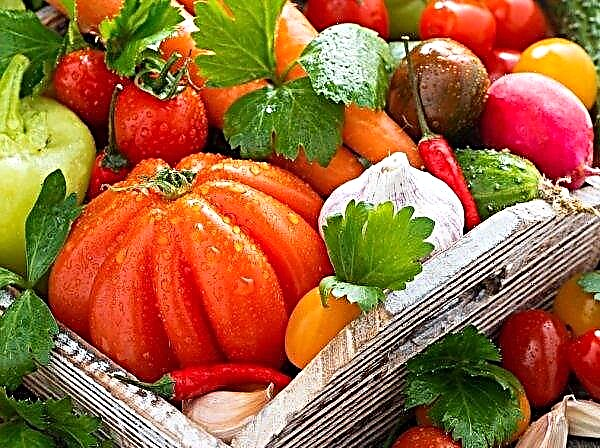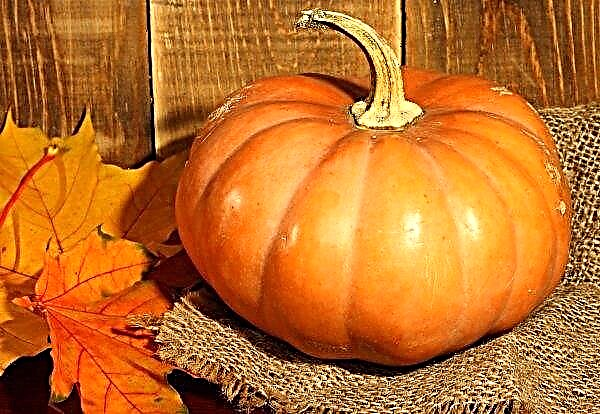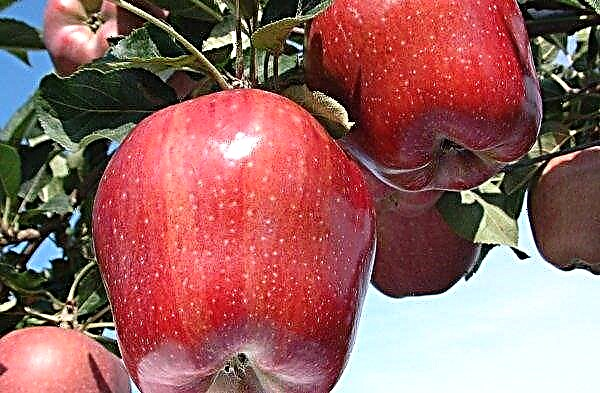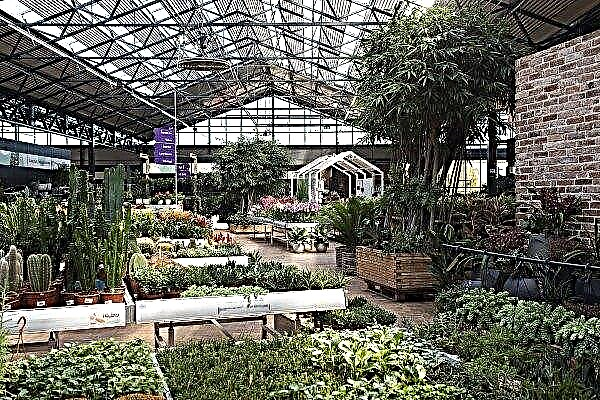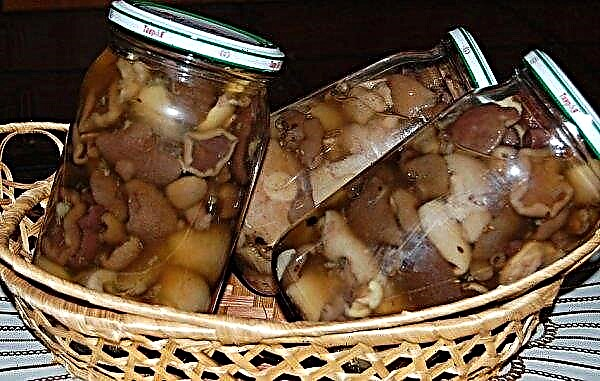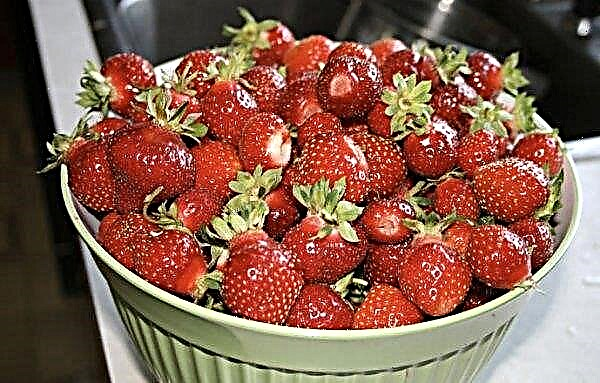Blueberries have long been successfully cultivated at home around the world. However, in our country, you can rarely see this plant in personal plots. However, every year this culture more and more gains the attention of domestic gardeners. There are about 150 varieties of this berry, and not only blue. In this article, we propose to consider a unique sort of pink blueberry Pink Blueberry.
Variety Characteristics
Pink varieties of blueberries are new varieties of this crop. A pleasant taste and unusual coloring of berries may interest many gardeners.
Geographic distribution
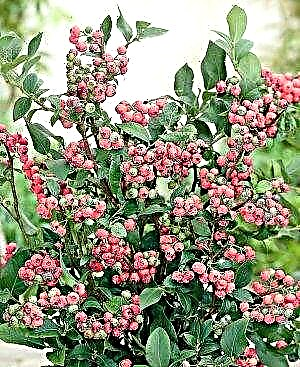 The cultivation of tall blueberries occurred in the early twentieth century on the North American continent. After World War II, the culture began to grow in Europe, and later the plant reached Asia and Australia. On the territory of the former USSR, culture began to be studied at the end of the twentieth century.
The cultivation of tall blueberries occurred in the early twentieth century on the North American continent. After World War II, the culture began to grow in Europe, and later the plant reached Asia and Australia. On the territory of the former USSR, culture began to be studied at the end of the twentieth century.
For a long time in the USA and Canada they worked on the cultivation of various varieties of this berry.
As a result of hybridization, in addition to the usual blue ones, pink varieties were also developed, including the Pink Blueberry variety.
This variety can be grown in almost all regions of Russia. The winter hardiness of this species is high (withstands up to –34 ° C), provided that the low temperature will remain for a short period. With prolonged severe frosts, the plant must be insulated.
Did you know? The fruits of blueberries contain a record amount of antioxidants, which are very useful for supporting youthful skin. A handful of berries in terms of substance is equivalent to five apples.
Description
This variety has a medium late or late ripening period. Tall shrubs reach a height of 2.5 m. The branches are erect, vertically directed. The crown is thick and wide (1.3–1.6 m). Often this plant is planted to create a hedge: shrubs well cover the area and at the same time look very beautiful.
Root system
Tall blueberry bushes have a superficial root system. It consists of two types of roots:
- Overgrowing. The main function of such roots is plant nutrition. Their thickness is less than 2 mm. As a rule, they are located in the upper soil layer.
- Skeletal. They serve to store nutrients and fix the shrub in the soil. The thickness of this type of roots reaches 10 mm.

Almost 80% of the root system of blueberries is located at a depth of not more than 36 cm. In width, most of the roots (about 84%) extend to a diameter of 61 cm. Only individual roots reach a distance of 150 cm from the base of the bush.
A feature of the root system of blueberries is the absence of root hairs, which allows the roots to instantly absorb nutrients. It is this factor that affects the particular sensitivity of this part of the plant to increased soil moisture.
Important! To ensure that the water does not linger and the root system is not in constant dampness, make a drainage hole 15 cm high in the planting pit.
In the wild, the root system of blueberries is covered with symbiotic organisms, which helps better absorption of nitrogen and phosphorus, protects against pathogenic microflora.
Leaves
The color of the leaves is green with a shiny glossy finish, the shape is lanceolate. In autumn, the plant takes on a very spectacular appearance: the leaves are painted in different shades of red, orange and yellow. In winter, the bush looks beautiful even without leaves due to the interesting color of the branches - brown with a red tint.
Fruit
Berries of this variety are medium in size and round in shape. During ripening, they change color from pale green, becoming covered with pink spots. When the fruits acquire a pink color with a yellow tint - this means that they have reached full maturity. 
The taste of berries is sweet, the finish is pleasant. The pulp is dense. Harvesting takes place from late July to early September. The first crop is the largest. Further on the bush, single fruits ripen, this can continue until mid-autumn. From one bush you can collect 3-4 kg of berries.
Landing
For planting, 2-3-year-old seedlings are best suited. It is necessary to choose planting material in trusted nurseries, since in natural markets you can sell a poor-quality seedling or it is not known which variety. Planting rules for this crop are general, regardless of variety.
It is worth noting one difference:- tall varieties are planted with a distance between the bushes of about 2 m;
- for undersized do a gap of up to 1 m.

If you already have Pink Blueberry bushes of blueberries, you can get new seedlings for propagation by:
- bush divisions;
- cuttings;
- layering.
Important! For high yields, it is worth planting two or more varieties of blueberries on the plot at the same time. This will contribute to better pollination of plants.
Recommended Dates
Experienced gardeners recommend planting Pink Blueberry blueberries in spring. If you carry out the procedure in the fall, it will be difficult for a young plant to survive the cold.
It is necessary to start planting immediately after thawing the earth. In the regions of our country, this period begins at different times, so the exact time depends on the climatic conditions of the area.
Choosing a place to land
In order to choose the right place for planting blueberries of this variety, it is necessary to take into account such factors:
- culture does not tolerate the proximity of groundwater;
- blueberries love well-lit areas;
- the place should be quiet;
- the soil should be loose, it is better if it is peat or sand;
- blueberries prefer acidic or slightly acidic soil.
Video: planting and caring for blueberries
It is also worth noting that it is better to plant blueberries in the area where fruit and berry plants did not grow before. The landing site must be thoroughly cleaned of weeds. The soil should be fertilized with organic and mineral fertilizers, and only then proceed with planting.
After landing care
Caring for blueberries after planting plays a big role for the plant. If you follow all the rules, then it will delight you for a very long time with its appearance and harvest.
We list the main care procedures:
- timely weeding and removal of weeds;
- regular loosening of the soil;
- pruning and bush formation;
- autumn cleaning near the bush;
- prevention from diseases and pests;
- soil moisture control;
- fertilizer application.
 Following these procedures, you can grow a gorgeous bush of blueberries in your area.
Following these procedures, you can grow a gorgeous bush of blueberries in your area.
Watering and feeding schedule
The bush will thank you very generously for regular watering. Immediately after planting and during the first year, the bush must be watered very often, preventing the soil from drying out. In dry weather, water the plant every other day. If it rains periodically, then you need to moisten the blueberries 1 time in 3 days.
 For adult bushes, it is especially important to be fed with moisture during the formation and ripening of fruits. Therefore, in this period, watering is carried out 1 time in 2 days. The rest of the time 1 time per week is enough.
For adult bushes, it is especially important to be fed with moisture during the formation and ripening of fruits. Therefore, in this period, watering is carried out 1 time in 2 days. The rest of the time 1 time per week is enough.
The amount of top dressing depends on the age of the shrub. If before planting you fertilized the soil with organic matter, then in the first year after this, the plant does not need additional fertilizing. A year later, under a young bush, you need to make a complex mineral mixture (20 g) and organic fertilizers (5 kg). The procedure is carried out in early spring.
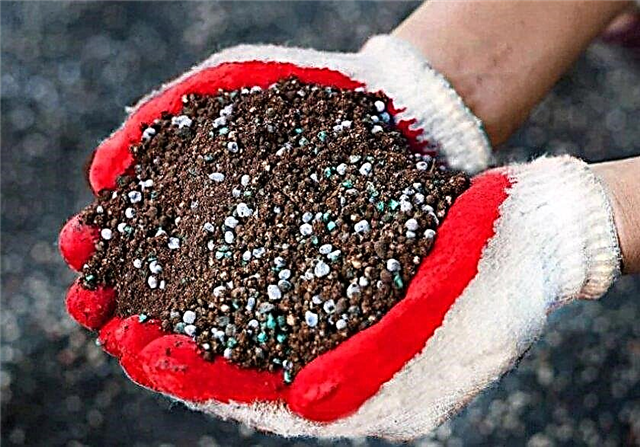 When the bush reaches the age of 3-4 years, the amount of fertilizer will be as follows: mineral fertilizing - 100 g per bush, organic - 10-15 kg.
When the bush reaches the age of 3-4 years, the amount of fertilizer will be as follows: mineral fertilizing - 100 g per bush, organic - 10-15 kg.
An adult and fruiting bush will require more attention. At the beginning of spring, 100 g of potassium fertilizer and 120 g of phosphorus fertilizer should be applied under the bush, and at the end of summer, 80 g of ammonium nitrate should be fed. Organics is added every year by 15 kg under the bush.
Did you know? Often, because of inexperience, blueberries and blueberries are confused. To prevent this from happening, just look at the branches of the plant: the shoots of blueberries are lignified, brown, and the branches of blueberries are green and flexible.
So, growing pink Blueberry pink Pink Blueberry does not bring much trouble. This tall shrub will not only delight you with delicious and healthy berries, but also decorate your garden plot.


